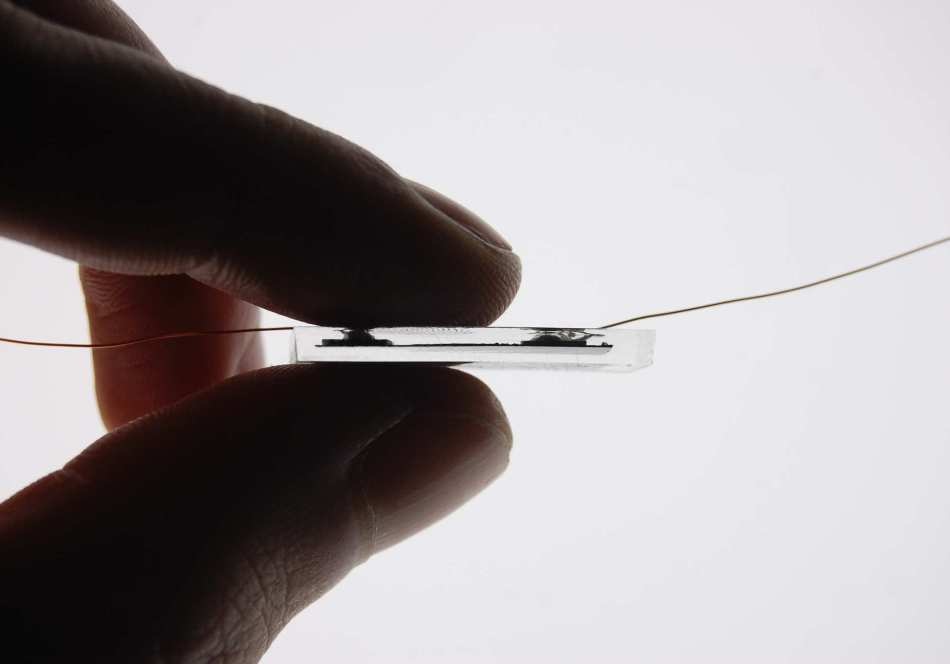Dec 11 2019
Bioengineers at Imperial College London have discovered a new method to produce squeezy soft and stretchy sensing devices by bonding rubber to electrical components.
 This is a sensor held between two fingers. Image Credit: Michael Kasimatis/Imperial College London.
This is a sensor held between two fingers. Image Credit: Michael Kasimatis/Imperial College London.
Squeezy soft and flexible sensors that can be squeezed in hands or fitted around body parts can be utilized for applications like rehabilitation following stroke or injury and sports. For instance, soft electrical force sensors that look like a squeeze ball can track the rehabilitation of patients suffering from neurological disorders or hand injuries.
Although such types of sensors were being developed for a long time, none of the devices had reached the market. This is because the sensors cannot be effortlessly incorporated into electronic parts—for example, batteries, computer chips, and wires are required to collect, process, and transmit the data gathered by the sensor.
A research team from Imperial College London has now developed a novel method using which the squeezy and stretchy force-sensitive soft materials can be bonded to electrical components. The scientists have created a sufficiently strong bond that allows the flexible rubber to break itself before the bond existing between the two varying materials does.
The study results have been reported in the ACS Applied Materials & Interfaces journal.
Monitoring Health in Your Own Home
We hope this method will allow us to make low-cost soft sensors that are reliable and portable, that can be used to monitor people’s health in their own homes. Such sensors could be coupled with a mobile device, such as a smartphone, so that the data they generate can be easily processed and stored on the cloud, which is important for applications in digital healthcare.
Michael Kasimatis, Study First Author, Department of Bioengineering, Imperial College London
Earlier, researchers had attempted to bond the conductive, force-sensitive rubbers with electrical components using metal clamps, which can potentially tear the flexible material, or using adhesives, which usually came apart upon pulling.
By contrast, the latest technique utilizes tiny pieces of metal-coated silicon that produce a chemical bond with the squeezy and stretchy rubber. One side of the silicon contacts is smooth and adheres to the rubber, while the other side is pitted and plated with copper; therefore, electric components, including wires, can be easily attached through traditional techniques like soldering.
Taking the Tech out of the Lab
The researchers showed how the new bonding technique is able to resist the strains of stretching, and they also applied the method to certain prototype sensors that can be utilized in rehabilitation and healthcare.
For instance, the team developed a squeezy ball for tracking hand rehabilitation, a leg band for exercise monitoring, as well as a wearable breathing monitor.
Having successfully demonstrated how this new bonding approach could work and be applied in laboratory prototypes, we now want to take this technology out of the lab and make it available to everyone.
Dr Firat Güder, Lead Researcher, Department of Bioengineering, Imperial College London
At present, the researchers are seeking funders and partners to help translate and further develop the technology.
Stretchy and squeezy soft sensors one step closer
Video Credit: Michael Kasimatis/Imperial College London.